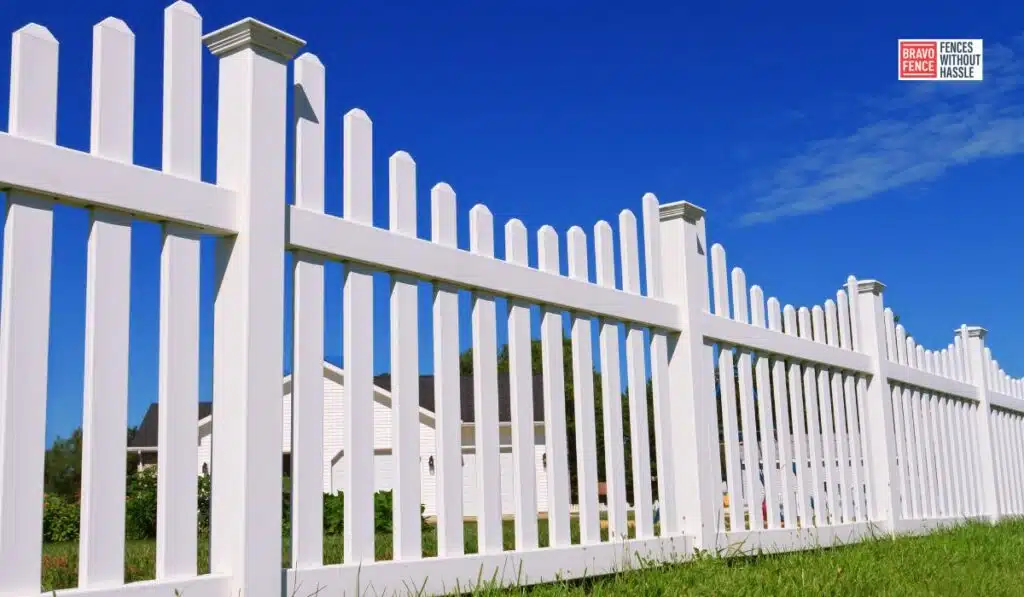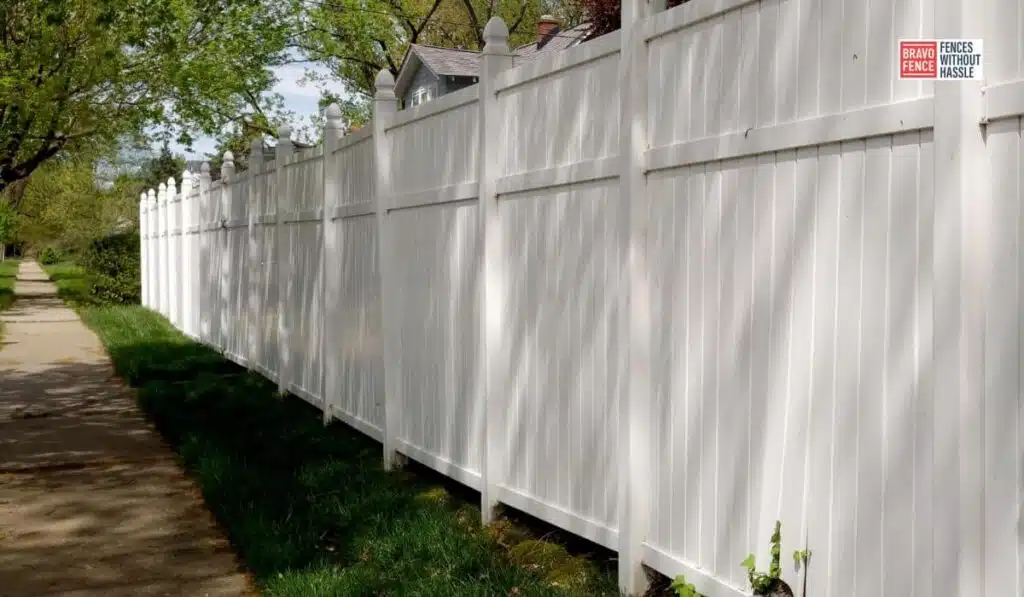
Vinyl Revival: Tips for Successful Fence Repair
Vinyl fencing has become a popular choice for homeowners due to its durability, low maintenance, and aesthetic appeal.
However, like any outdoor structure, vinyl fences can still experience wear and tear over time, requiring occasional repairs to maintain their functionality and appearance.
In this article, we’ll explore some valuable tips for successfully repairing vinyl fences, ensuring they remain sturdy and visually pleasing for years to come.
Fence Condition Check
Before embarking on any repair project, it’s essential to thoroughly assess the extent of the damage to your vinyl fence.
Walk along the fence line and inspect each panel, post, and connection point for signs of wear, cracks, or breakage.
Identifying the specific areas in need of repair will help you plan and prioritize your efforts effectively.
Gather the Necessary Tools and Materials
Once you’ve assessed the damage, gather all the tools and materials you’ll need for the repair job.
Standard tools for vinyl fence repair include a hammer, screwdriver, saw, level, measuring tape, and a power drill.
Additionally, you’ll likely need replacement vinyl panels, posts, caps, brackets, screws, and adhesives specifically designed for use with vinyl fencing.

Secure Loose or Damaged Panels
If you notice any loose or damaged panels, it’s crucial to address them promptly to prevent further deterioration and maintain the integrity of the fence.
Use screws or brackets to reattach loose panels securely to the fence posts, ensuring they are level and properly aligned.
For cracked or broken panels, consider replacing them entirely to avoid compromising the fence’s structural stability.
Reinforce Weak Posts
Over time, vinyl fence posts may become weakened due to exposure to harsh weather conditions or accidental damage.
To reinforce weak posts, insert metal or wooden inserts into the hollow center of the post to provide added support and stability.
Secure the inserts in place with adhesive and allow sufficient time for it to cure before reattaching the fence panels.
Replace Damaged Components
In some cases, damaged components such as post caps, brackets, or gate hardware may need to be replaced to ensure the fence functions properly and looks its best.
Remove the damaged components carefully and install the replacements according to the manufacturer’s instructions, providing a secure and seamless fit.
Clean and Maintain the Fence
Once you’ve completed the necessary repairs, clean and maintain your vinyl fence to prolong its lifespan and keep it looking like new.
Regularly remove dirt, debris, and mold buildup using a mild detergent and a soft brush or cloth.
Additionally, inspect the fence periodically for signs of damage or wear and address any issues promptly to prevent further deterioration.
Consider Professional Assistance
While many vinyl fence repairs can be tackled as DIY projects, more extensive damage or complex issues may require professional assistance.
If you’re unsure about your ability to repair the fence yourself effectively, don’t hesitate to consult with a reputable fencing contractor or handyman.
They can provide expert advice, assess the extent of the damage, and execute the necessary repairs efficiently, saving you time and effort in the long run.
Protect Against Future Damage
Prevention is critical to maintaining the integrity of your vinyl fence and minimizing the need for future repairs.
Take proactive measures to protect your fence from potential damage, such as trimming overgrown vegetation that could exert pressure on the panels or regularly inspecting and tightening hardware to prevent loosening.
Additionally, consider applying a protective sealant or UV-resistant coating to the fence to enhance its durability and resistance to fading from sun exposure.
Plan for Long-Term Maintenance
In addition to immediate repairs, it’s essential to develop a long-term maintenance plan to keep your vinyl fence in top condition year after year.
Schedule regular inspections to identify and address any emerging issues before they escalate into costly repairs. Routine maintenance tasks may include:
- Cleaning.
- Lubricating hinges and latches.
- Inspecting for signs of wear or damage to ensure your fence remains strong, secure, and visually appealing for the foreseeable future.
Explore Upgrade Options
If your vinyl fence is showing signs of extensive wear or no longer meets your aesthetic preferences, consider exploring upgrade options to enhance its appearance and functionality.
Upgrades such as decorative post caps, lattice panels, or accent lighting can add a touch of style and sophistication to your fence while improving curb appeal and increasing property value.
Consult with fencing professionals or explore online resources to discover innovative design options and customization features available for vinyl fencing.
Weatherproofing for Durability
Vinyl fences are designed to withstand various weather conditions, but prolonged exposure to extreme elements can still cause damage over time.
To enhance the durability of your fence, consider applying a weatherproofing treatment specifically formulated for vinyl surfaces.
This protective coating can help shield the wall from moisture, UV rays, and temperature fluctuations, reducing the risk of fading, warping, or cracking.
Be sure to follow the manufacturer’s instructions for proper application and reapplication intervals to maximize the effectiveness of the weatherproofing treatment.
Addressing Structural Issues
In some cases, vinyl fence repairs may involve addressing underlying structural issues that affect the fence’s stability and longevity.
Common structural problems include uneven ground settlement, improper installation, or inadequate support for the fence posts.
Suppose you notice signs of structural instability, such as leaning or sagging sections of the fence.
In that case, it’s essential to address these issues promptly to prevent further damage and ensure the safety of your property.
Please consult with a fencing professional to assess the situation and determine the best course of action for reinforcing the fence’s structure and restoring its integrity.
Safeguarding Against Pest Damage
While fences are resistant to rot and decay, they may still be susceptible to damage from pests such as termites, ants, or rodents seeking shelter or food sources.
Inspect the perimeter of your fence regularly for signs of pest activity, such as chew marks, burrows, or droppings.
If you suspect pest infestation, take proactive measures to eliminate the problem and prevent future damage.

This may involve applying pest deterrents, sealing potential entry points, or consulting with a pest control professional for targeted treatment options.
Educating Yourself on Warranty Coverage
Many vinyl fencing products come with manufacturer warranties that cover defects in materials or artistry for a specified period.
Familiarize yourself with the terms and conditions of your fence’s warranty coverage to understand your rights and responsibilities in the event of repair or replacement needs.
Keep records of your purchase receipt, warranty documentation, and any correspondence with the manufacturer to facilitate the warranty claims process if necessary.
By staying informed about your warranty coverage, you can take advantage of available protections and potentially save on repair costs associated with covered issues.
Embracing Sustainable Practices
As awareness of environmental conservation grows, homeowners are increasingly seeking eco-friendly solutions for home improvement projects, including fence repairs.
When repairing your vinyl fence, consider incorporating sustainable practices and materials to minimize environmental impact and promote resource conservation.
Look for eco-friendly vinyl products made from recycled materials and choose energy-efficient tools and techniques for repair and maintenance tasks.
Additionally, explore alternative landscaping options, such as native plants or porous surfaces, to complement your fence and create a more sustainable outdoor environment for your property.
By embracing sustainable practices, you can not only enhance the longevity and performance of your vinyl fence but also contribute to a greener, more eco-conscious lifestyle overall.
Conclusion
Vinyl fencing continues to be a popular choice for homeowners seeking a durable, low-maintenance solution for enclosing their outdoor spaces.
By following the additional tips provided in this article, homeowners can further enhance the durability, functionality, and sustainability of their vinyl fences.
Whether weatherproofing for durability, addressing structural issues, safeguarding against pest damage, educating oneself on warranty coverage, or embracing sustainable practices, there are various strategies and techniques available to ensure the long-term success of vinyl fence repairs.
By incorporating these tips into their maintenance routine, homeowners can enjoy a beautiful, resilient vinyl fence that enhances the beauty and value of their property for years to come.
For professional assistance with your vinyl fence repair needs, contact Bravo Fence Company.
FAQs
How do I assess the damage to my vinyl fence?
Before starting any repair work, thoroughly inspect your fence for signs of wear, cracks, or breakage. Walk along the fence line and examine each panel, post, and connection point to identify areas in need of repair.
What tools and materials do I need for vinyl fence repair?
Standard tools include a hammer, screwdriver, saw, level, measuring tape, and power drill. Additionally, you’ll need replacement vinyl panels, posts, caps, brackets, screws, and adhesives designed for vinyl fencing.
How do I secure loose or damaged panels?
Use screws or brackets to reattach loose panels securely to the fence posts, ensuring they are level and properly aligned. For cracked or broken panels, consider replacing them entirely.
How can I reinforce weak posts in my vinyl fence?
For added support, insert metal or wooden inserts into the hollow centers of weakened posts. Secure the inserts with adhesive and allow it to cure before reattaching fence panels.
When should I replace damaged components like post caps or brackets?
If damaged components affect the fence’s functionality or appearance, replace them as needed. To ensure a secure fit, follow the manufacturer’s instructions for proper installation.
How do I clean and maintain my vinyl fence?
Use a mild detergent and a soft brush or cloth to remove dirt, debris, and mold build up regularly. Inspect the fence periodically for damage or wear and address any issues promptly.
Tags: Complete Guide to Vinyl Fence Crack Repair, Complete Guide to Vinyl Fence Panel Repair, Complete Guide to Vinyl Fence Repair Cost, Complete Guide to Vinyl Fence Repair Services, Explore Helpful Resources on Diy Vinyl Fence Repair, Explore Helpful Resources on Vinyl Fence Gate Repair, Explore Helpful Resources on Vinyl Fence Post Repair, Inspiration and Tips on Vinyl Fence Repair Kit, Top Ideas and Insights About Vinyl Fence Hole Repair

